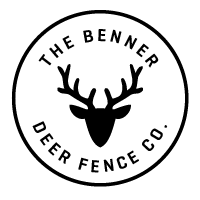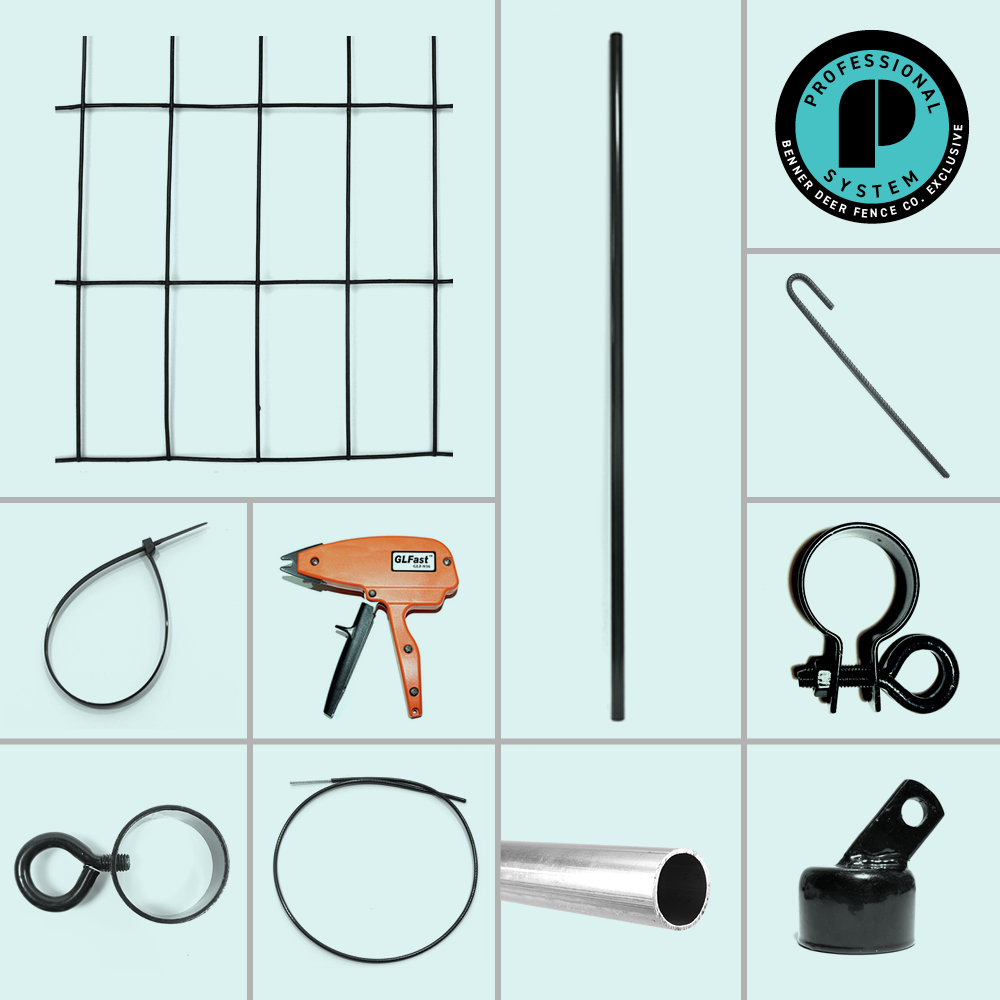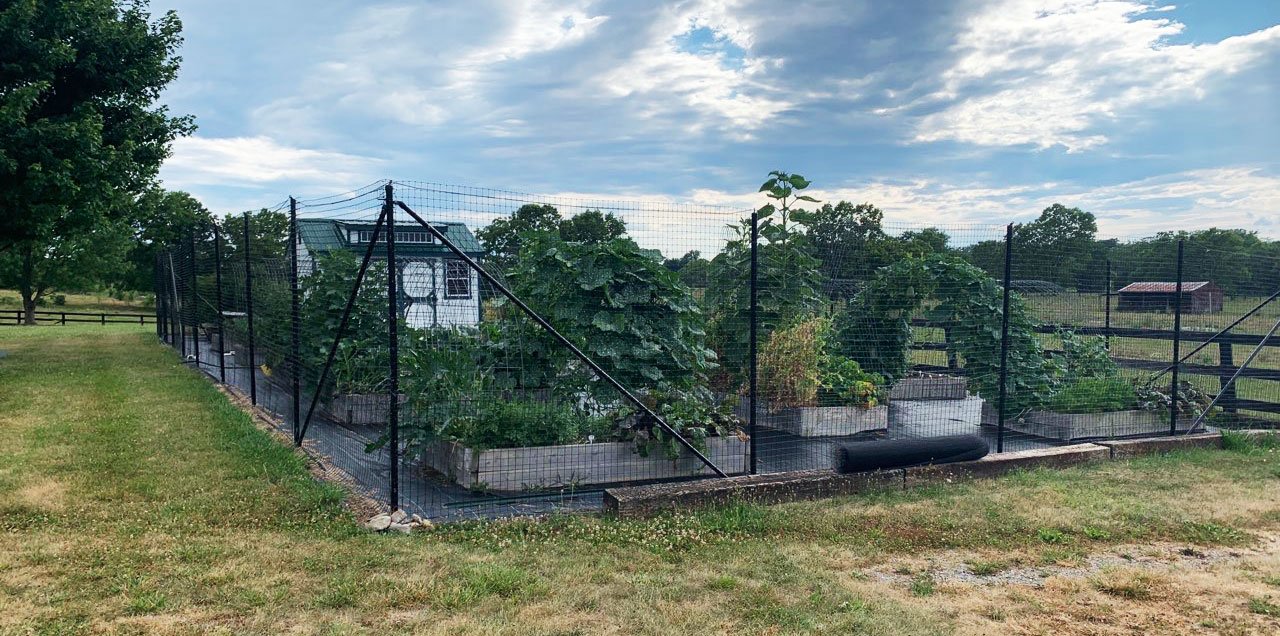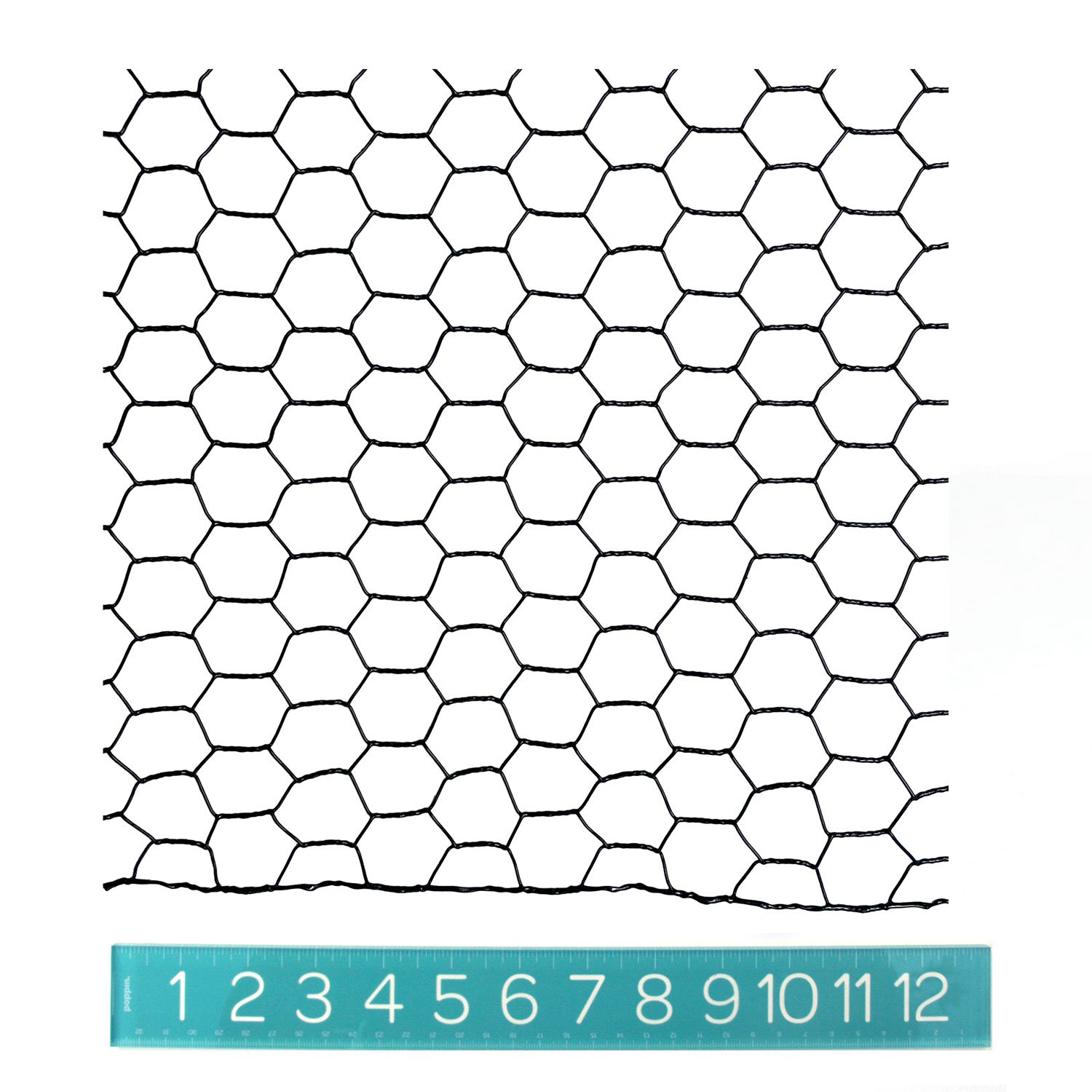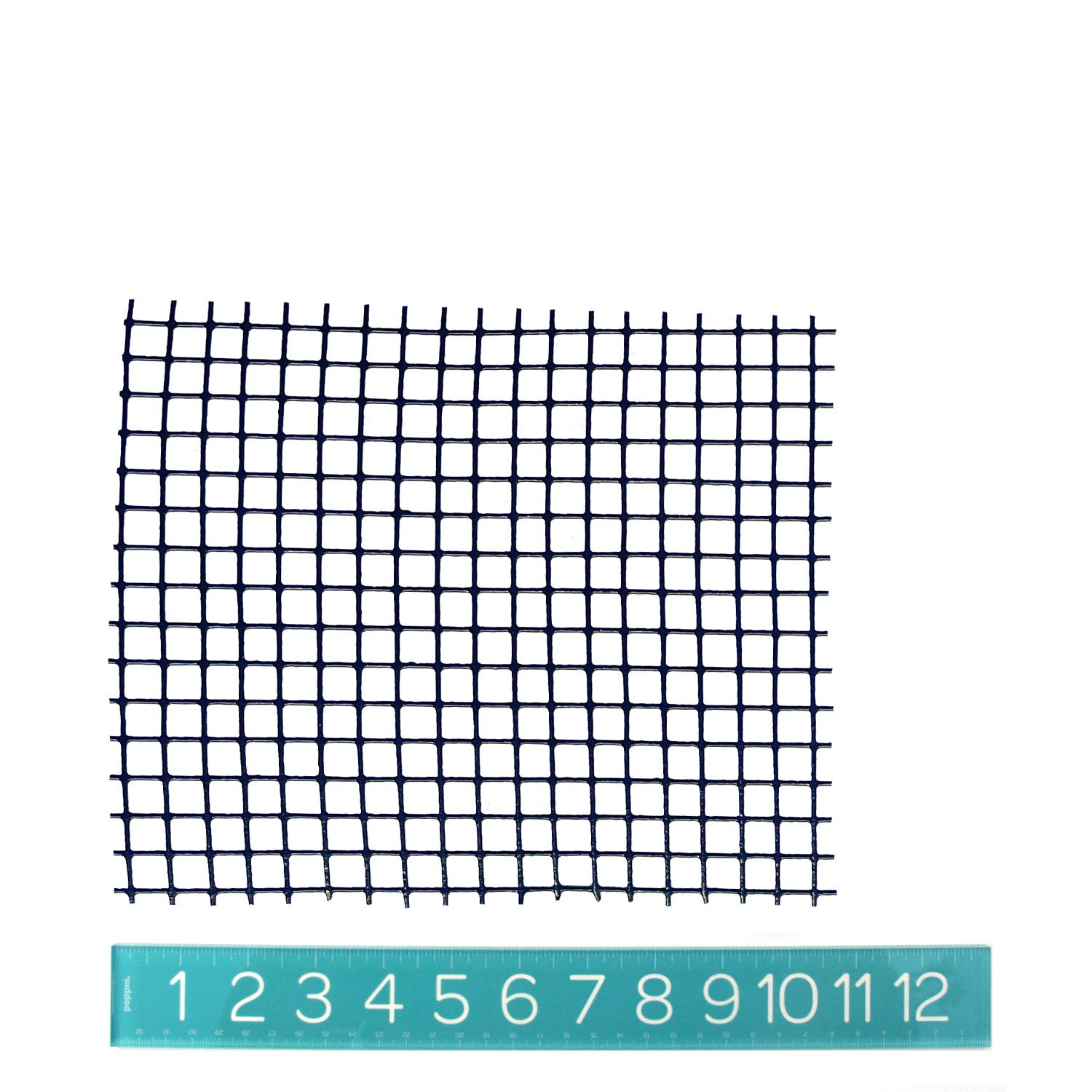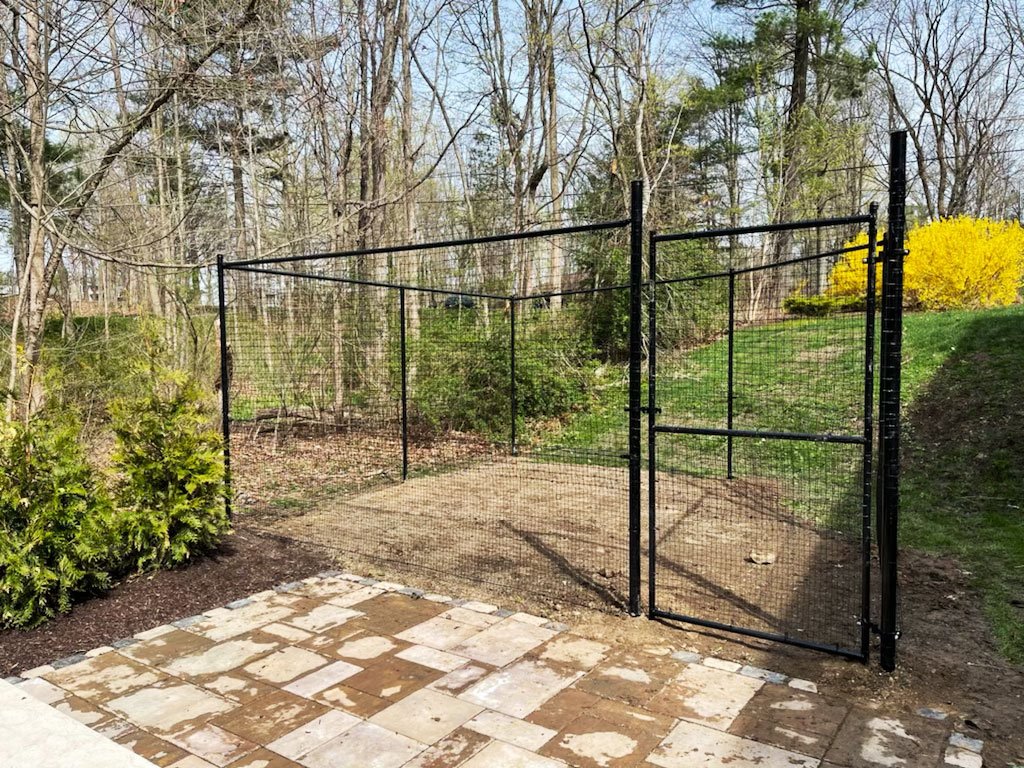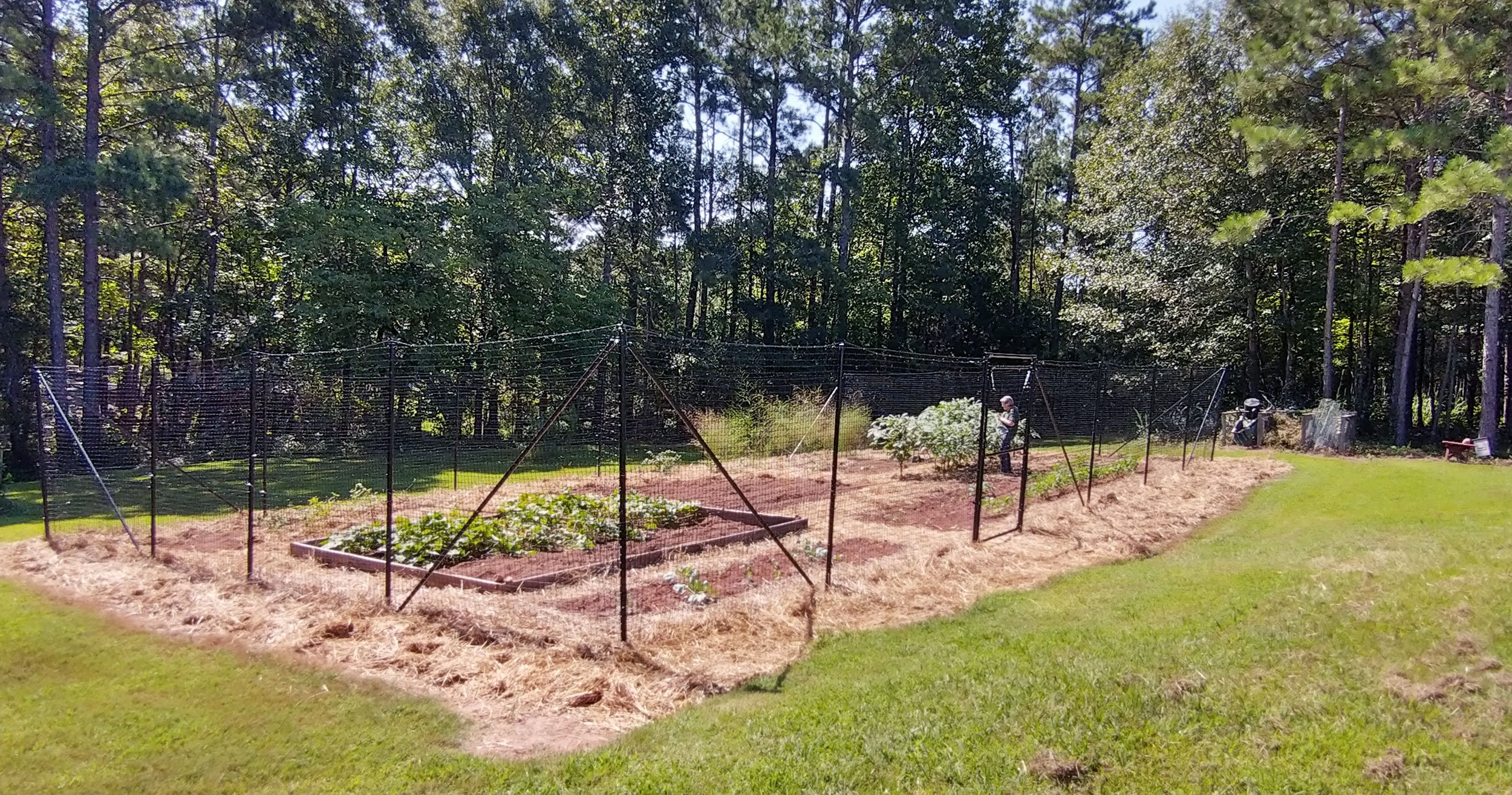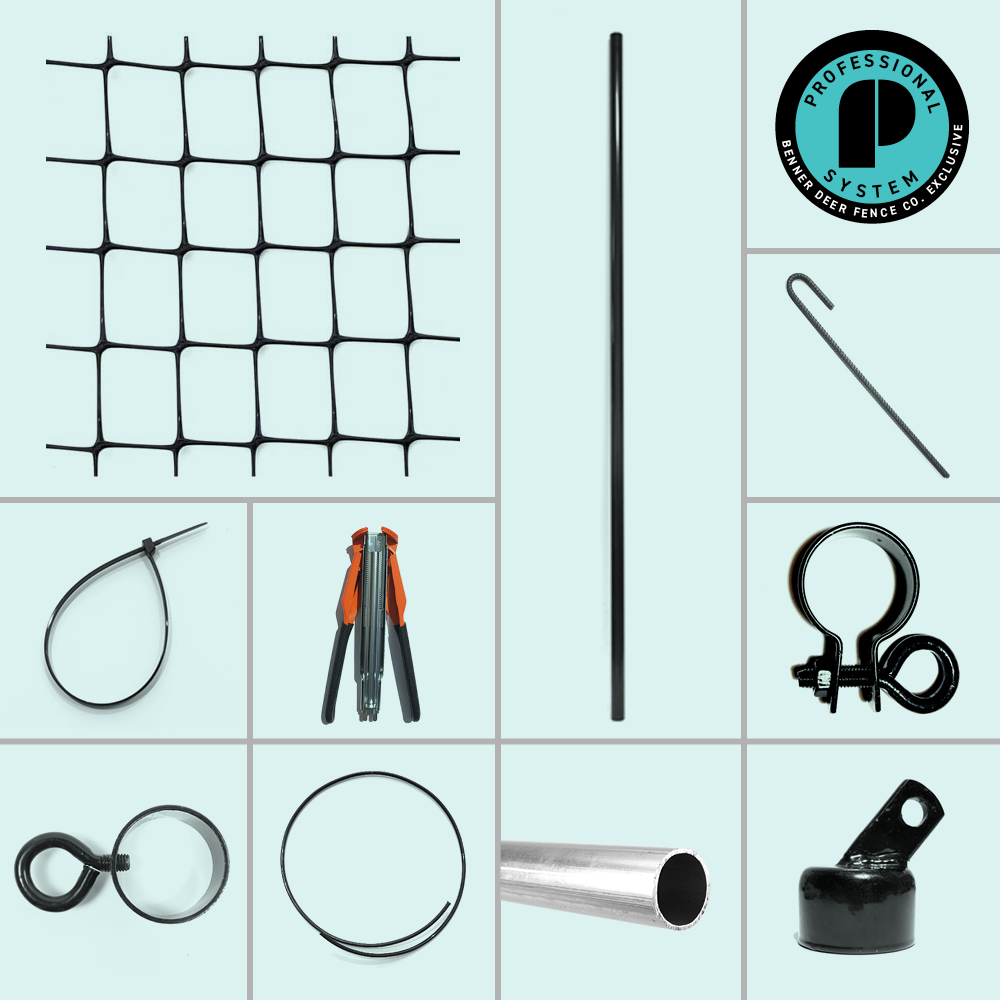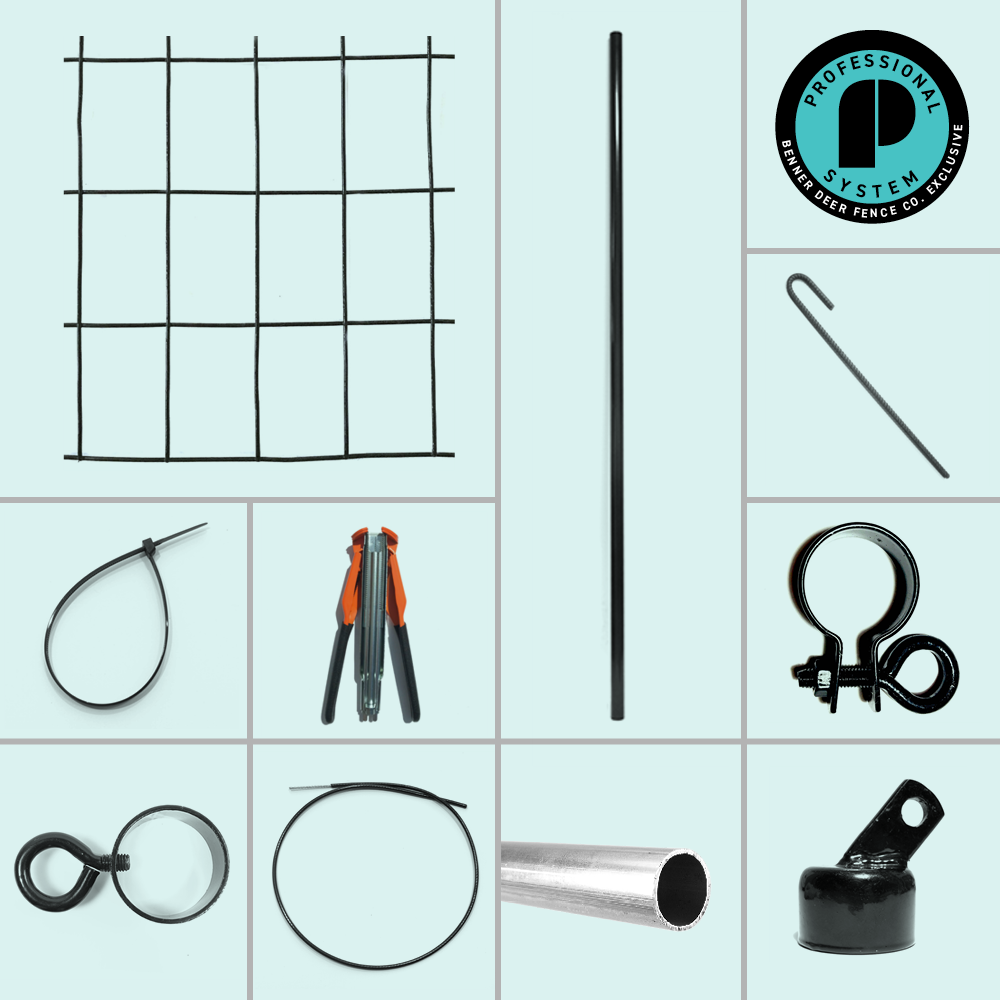Ten Garden Fences Using Deer Fencing Materials—Deer Fence for Garden
8 ft. x 210 ft. deer fence garden enclosure using 14 gauge black PVC coated welded wire.
Over the past few years, we’ve had more and more requests from homeowners for garden fence solutions using both poly and metal deer fencing materials. We’ve put together 10 of our favorite–ranging from less than 60 linear feet to over 300 feet. Our years of experience installing and maintaining these fences as well as speaking with homeowners across the country about their successes and challenges has given us a lot of insights that we’ve put together in this post. We’d love to hear about your experiences in the comments below or on our social media sites.
#1
6 foot high metal garden deer fence in Bucks County, PA. 1” x 1” chew guard along bottom 3 feet of fence.
#2
Large garden fence with polypropylene and metal fence materials. The top 5 feet of the fence consists of maximum duty poly deer fence–and the bottom 3 feet of fence is 14 gauge 2” x 2” black PVC coated welded wire. Many homeowners like this options for a few reasons: First of all, having metal fence along the bottom portion of the fence prevents critters from chewing holes in the poly fence. Secondly, having 2 fences allows you to achieve an 8 ft. (or taller fence) and still have fencing to bend out along the ground (or bury) to help keep rodents and deer from going under the fence. Another reason benefit of the dual fence is that is less cumbersome to manage the fence rolls since they are smaller and weigh less.
How high does a garden fence for deer need to be?
Here are fence height recommendations based on our years of experience:
8 feet works well in wide open areas of grass + fields for enclosures over 200 feet.
7 feet works very well in wooded areas, small back yards or areas with difficult terrain for deer to navigate and jump.
5-6 feet works well for garden enclosures up to 150 total feet or those with difficult terrain for deer to navigate and jump.
It is important to flag the fence with white streamers for the first year after installation.
#3 No Weeds
Weed mat installed along fence line prior to fence installation.
Can I use a poly fence to keep deer out of my garden?
The short answer is yes. The long answer is yes, but… While a polypropylene fence can be very effective in keeping deer out of a garden, it can be problematic. Deer aren’t the only animals that would like to raid your fruits, vegetables and flowers. Critters and rodents typically start chewing through the bottom of a poly garden fence within the first year. These openings allow not only rodents, but also deer to get into your garden. We recommend that at least the bottom two feet of a poly fence is covered with metal fence. Light gauge metal fence can be installed on top of a full height poly fence. It is recommended to have a middle horizontal tension cable installed to support metal fence. There are situations where a poly only fence may be effective, such as living on an island or an area with a very small rodent population.
Request a garden fence quote:
#4
Garden deer fence in Virginia.
How do I keep critters and rodents out of my garden?
In addition to deer, there are many other critters and rodents that can reek havoc on a garden. Most of them can be kept out with fencing solutions. Some of the challenges that homeowners face include: keeping ground hogs from digging under their fence, keeping vols from channeling under their fence, keeping out rabbits and armadillos as well as squirrels and chipmunks. The good news is, we have solutions for most of them. Most importantly— all of these critters can chew through plastic or poly fencing so it is essential to have a minimum of 2 feet of metal fencing along the bottom of any garden fence.
Ground hogs: We’ve seen many homeowners have success keeping ground hogs out of their gardens by making it difficult for the ground hogs to dig under the fence. There are a few ways to frustrate them: The most effective is to trench your entire fence line at least 2 feet into the ground and bury metal fence. We’ve found over the years that bending or laying a foot of so of metal fencing out along the ground towards the outside of the fence and staking it to the ground is also very effective. In addition, constantly monitoring the areas around the bottom of your fence and immediately blocking off any holes with rebar ground stakes, rocks or covering the holes with pieces of metal fence and ground staking it into the ground does a good job of frustrating them.
Vols: Vols require a metal fencing with an opening of no larger than 1/4 inch and the fence needs to be buried at least 1 foot into the ground with at least six inches of fence above ground. We suggest using our 19 gauge black PVC coated hardware cloth with 1/4 inch openings. Keep in mind, any gaps or openings around gates need to be completely closed off.
Rabbits: Rabbits and bunnies can fit through very small spaces including gaps under a fence, openings around a gate and between the fencing itself if the mesh grid is too large. Generally, a 2” x 2” grid opening will keep out most rabbits, though smaller bunnies can fit through. We suggest using either our 1” x 1” black PVC coated welded wire fencing or our black PVC coated chicken wire to keep out the small bunnies.
Armadillos: Though armadillos can climb, a fence generally works to keep them out of a garden. A heavy gauge metal fence of at least 16 gauge is recommended to keep armadillo out.
Squirrels + Chipmunks: While a traditional fence won’t do much to keep squirrels and chipmunks out, we do have custom solutions that include a top covering for smaller enclosures that can help keep out squirrels and chipmunks.
Check out one of trenched garden installation project:
#5 Rose Garden
Rose garden fence installed on sloping terrain in Maine.
How far apart do my post need to be?
Our general recommendation for post spacing is 10 feet. However, post spacing can range from 8 to 14 feet depending on various factors. Here are some things to consider when determining your post spacing:
Metal Fence + Flat Terrain: 8 ft.—12 ft.
Metal Fence + Hilly Terrain: 8 ft.
Poly Fence + Flat Terrain: 10 ft.—14 ft.
Poly Fence + Hilly Terrain: 10 ft.
End, corner and gate posts require bracing. Post spacing may need to be closer than line post spacing.
#6
All metal vegetable garden fence in Berks County, PA.
Do I need to use cement?
Both of our product lines do not require the use of cement except for large gate posts (driveway gates over 8 ft. wide). The system is compatible with adding cement if desired. Some contractors and homeowners do use cement for end, corner and gate posts, though it is not necessary. Both systems include bracing for end, corner and gate posts. Learn more about our Professional and Standard Systems.
#7
Small garden deer fence with top brace rail. Our fencing systems and materials are highly customizable–depending on your needs and aesthetics. The fencing can contour your terrain, step style installation, top, bottom and horizontal bracing can be used as well. Contact us if you need help with a custom project.
How big does my gate need to be?
Gate sizes range from 3 feet to 5 feet for pedestrian gates and up to 16 feet (double wide) for vehicles and large equipment. We suggest making sure your gate is a little bit larger than the biggest thing you expect to bring into your garden. Keep in mind, a 10 foot single gate may be a bit cumbersome to use on a daily basis for pedestrian access. Double gates with a removable center latching post can offer the easy use of a single pedestrian gate but give you the option to bring in a large tractor or truck to deliver soil. We offer a variety of gate sizes and can customize gates to almost any specification to suite your needs.
#8
Poly and metal combo fence with trenched in ground metal fence.
How can I keep weeds from growing up the fence?
Planning ahead and installing heavy duty weed block along your fence line may be the best way to prevent weeds from growing up your fence. One option that we really like is Weedseal® Fence and Border Guard by Bruckman Rubber Co. The mat can be covered with decorative rocks or mulch to match your landscaping. If you don’t install a weed block and have weeds, you can trim fairly close to a metal fence with a weed wacker, but be extra careful not to continually hit the metal fence because it can damage the PVC coating.
#9
Small metal garden deer fence around raised beds.
How do I know what I’ll need to build a garden fence?
We have many options to help you get the best garden deer fence solution. If you’re just starting out and would like some help, you can call or email us or fill out a quote request. If you have some idea of what you are looking for, we offer a wide selection of customizable kits that can be ordered directly from our website.
#10
Vegetable garden fence with poly and metal fencing installed in a residential neighborhood.
